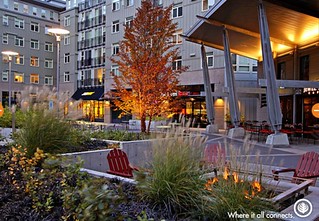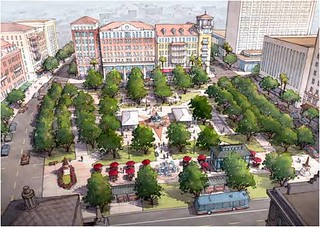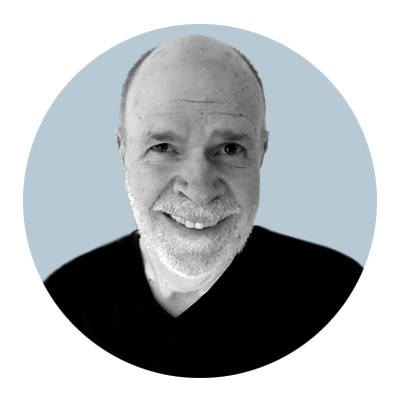A Placemaking Journal
Is placemaking a “new environmentalism”?
Can placemaking – in short, the building or strengthening of physical community fabric to create great human habitat – be a “new environmentalism”? The question is posed by a provocative short essay, which I first discovered in 2011. Written by Ethan Kent of the Project for Public Spaces, the article continues to make the rounds. The essay influenced my own writing (“The importance of place to sustainability”), and I’m returning to it here because the issues Ethan has raised continue to be important.
My answer, by the way, is a qualified yes: creating the right kinds of places for people, particularly at the neighborhood scale, has indeed become a new approach to environmentalism and one to which I am deeply committed. But I qualify my answer because placemaking is by no means the only important aspect of today’s environmentalism (not that Ethan suggested that). In addition, I think the physical building of community can become even stronger as an environmental tool by becoming somewhat more explicitly environmental in its content. I’ll get into all that in a minute.
 First, though, I want to explore the phrase “new environmentalism” a bit. Years ago, the well-known urbanist Andres Duany was kind enough to write a cover blurb for NRDC’s then-new book about smart growth, Solving Sprawl. Andres wrote, “Finally, here is a book on the environment that includes the human habitat as part of nature. This may be the first text of a ‘New Environmentalism’.” I was quite honored by the flattery that our book was being considered important and new, and by the parallel language to “new urbanism,” bestowed by one of that movement’s pillars. Might our way of thinking – advocacy for smart, green “people habitat,” if you will – be earning its way to an impact on the environmental movement as significant as that brought by the new urbanists to architecture and planning?
First, though, I want to explore the phrase “new environmentalism” a bit. Years ago, the well-known urbanist Andres Duany was kind enough to write a cover blurb for NRDC’s then-new book about smart growth, Solving Sprawl. Andres wrote, “Finally, here is a book on the environment that includes the human habitat as part of nature. This may be the first text of a ‘New Environmentalism’.” I was quite honored by the flattery that our book was being considered important and new, and by the parallel language to “new urbanism,” bestowed by one of that movement’s pillars. Might our way of thinking – advocacy for smart, green “people habitat,” if you will – be earning its way to an impact on the environmental movement as significant as that brought by the new urbanists to architecture and planning?
I’ll let others judge the extent to which that has come to pass, and quite immediately proclaim that, to the extent it may have, the philosophy expressed in Solving Sprawl was neither all “ours” nor all “new.” (New urbanism wasn’t really new, either.) In discussing the death of the great American singer/drummer Levon Helm, my friend Geoff opined that all music is derivative; he’s right about that, and the same can be said for the school of environmental thought that came to be known as smart growth. Its tenets evolved from precedent, and one hopes they are evolving still.
All that said, there was indeed something new about the environmentalism that developed in the 1990s and continues so far in this century, in that now what we are for is every bit as important as what we wish (and need) to stop. I detailed my personal version of that transition (“NIMBY to YIMBY”) in an Earth Day essay written two years ago. And people habitat – neighborhoods, cities, metropolitan regions – is every bit as important to the environment as natural habitat and wilderness. Indeed, making cities great should be seen as a key strategy for protecting wilderness.
 Today’s environmentalism incorporates the truth that, yes, we do need to build things. We need homes, workplaces, shops, schools, streets, factories, warehouses, ports, mobility, sources of energy. We need sustenance and we need commerce. To me, the excitement in environmentalism today is in making all that as good and as sustainable as possible. While there are still far too many things we absolutely must say “no” to, I’ve lost patience with the old environmental approach of saying no without a clear sense of the preferable alternative. It’s OK to be idealistic, if you must (I’m more of a pragmatist, myself), but please do have a vision if you want my personal support.
Today’s environmentalism incorporates the truth that, yes, we do need to build things. We need homes, workplaces, shops, schools, streets, factories, warehouses, ports, mobility, sources of energy. We need sustenance and we need commerce. To me, the excitement in environmentalism today is in making all that as good and as sustainable as possible. While there are still far too many things we absolutely must say “no” to, I’ve lost patience with the old environmental approach of saying no without a clear sense of the preferable alternative. It’s OK to be idealistic, if you must (I’m more of a pragmatist, myself), but please do have a vision if you want my personal support.
So that brings me back to Ethan’s essay about placemaking, which is eloquent on the subject: “Having less impact is noble, but aspiring to have a big impact, to create the world we want starting in the place where we live, work and play, is a transformative agenda.” And so it is, because placemaking is an affirmative act, fundamentally about creating something: quite literally, “making” a “place.” At the Project for Public Spaces, where Ethan is vice president, the focus is on our public realm – our streets, our plazas and squares, our waterfronts, our parks, our markets and so on.
These are incredibly important aspects of our people environment and, by placing them in cities and walkable neighborhoods, they become incredibly important to our natural environment as well. To the extent we use great public spaces to anchor compact people habitat, we reduce the spread of environmental harm. I would argue that the shaping of the private realm is also an important aspect of placemaking, and that we must get that part of our community fabric right, too.
 I wouldn’t stop with the physical shaping of places, though. If the affirmative making of great places may define an important part of 21st-century environmentalism, making those places greener could strengthen the role of public spaces and urbanism in the environmental movement. In other words, let’s not just make a public square that works for people and call it good enough: let’s make it of locally sourced, sustainably harvested materials; in environments where it rains a lot, let’s incorporate green infrastructure to filter stormwater. If there’s a fountain – and I love fountains – let’s make sure it recycles its water; if there is lighting, let’s make it energy-efficient. Let’s take advantage of opportunities to bring more nature into neighborhoods, with plantings of native species. And so on.
I wouldn’t stop with the physical shaping of places, though. If the affirmative making of great places may define an important part of 21st-century environmentalism, making those places greener could strengthen the role of public spaces and urbanism in the environmental movement. In other words, let’s not just make a public square that works for people and call it good enough: let’s make it of locally sourced, sustainably harvested materials; in environments where it rains a lot, let’s incorporate green infrastructure to filter stormwater. If there’s a fountain – and I love fountains – let’s make sure it recycles its water; if there is lighting, let’s make it energy-efficient. Let’s take advantage of opportunities to bring more nature into neighborhoods, with plantings of native species. And so on.
I am not suggesting, by the way, that these things are not being pursued. In fact, I am confident that in many cases it is the Project for Public Spaces that is leading the way for greener urbanism. What I am suggesting is that, if our approach to environmentalism is and should be “new,” so should our approach to urbanism. As in so many matters relating to the environment, the greatest power lies in synergy: the more we learn from each other, the better both our people habitat and our natural habitat will be.
Originally featured on the NRDC Switchboard, now archived here. Reprinted here with Kaid’s permission. Move your cursor over the images for credit information.
–Kaid Benfield
If PlaceShakers is our soapbox, our Facebook page is where we step down, grab a drink and enjoy a little conversation. Looking for a heads-up on the latest community-building news and perspective from around the web? Click through and “Like” us and we’ll keep you in the loop.










